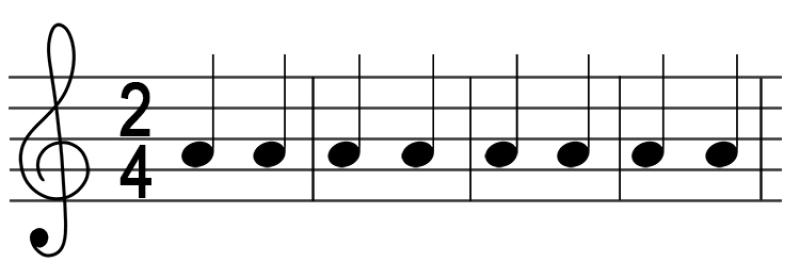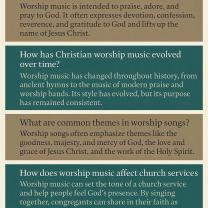How to work out a time signature?
Time signatures in music indicate the rhythm and meter of a piece. They consist of two numbers written as a fraction at the beginning of a musical staff. The top number denotes the number of beats in each measure, while the bottom number indicates the note value that represents one beat. To work out a time signature:
Count the Beats:
- Listen to the music or look at the rhythm of the piece to determine the number of beats in a measure.
- Count the strong, recurring pulses or accents in the music to identify the beats.
Identify the Note Value:
- Determine the note value that represents one beat. Common note values include quarter notes, eighth notes, or half notes.
Count the Subdivisions:
- Divide each measure into smaller subdivisions based on the chosen note value.
- For instance, if the piece has four beats in a measure, and the quarter note receives one beat, each measure may contain four quarter notes.
Write the Time Signature:
- The top number represents the number of beats per measure.
- The bottom number indicates the note value representing one beat.
For example:
If the music has four beats in a measure, and the quarter note receives one beat, the time signature might be 4/4 (four beats per measure with the quarter note receiving one beat).
If the music has three beats in a measure, and the quarter note receives one beat, the time signature might be 3/4 (three beats per measure with the quarter note receiving one beat).
Understanding the rhythm and counting the beats and note values in a musical passage are key to determining the appropriate time signature. Practice and familiarity with different rhythmic patterns and note values in music will help in accurately identifying the time signature of a piece.
What steps or procedures are used to determine a musical time signature?
Determining a musical time signature involves analyzing the rhythmic patterns and structure of a piece of music. Here are the key steps and procedures involved:
1. Identify the basic rhythmic unit:
- Listen to the music and tap your foot or clap along to the underlying pulse.
- Identify the smallest recurring unit of beats, also known as the "pulse" or "beat unit."
- This is usually the fastest constant rhythmic subdivision in the music.
2. Count the number of beats per measure:
- Listen for the strongest accent or emphasis within the music, indicating the beginning of each measure.
- Count the number of beats occurring between each strong accent. This number represents the number of beats per measure in the time signature.
3. Identify the note value of the beat unit:
- Determine the type of note representing the beat unit you identified in step 1 (e.g., quarter note, eighth note, etc.).
- This note value will be the bottom number in the time signature.
4. Express the time signature:
- Combine the number of beats per measure (top number) and the note value of the beat unit (bottom number) to form the time signature.
- For example, if the piece has four quarter notes per measure, the time signature would be 4/4.
Additional indicators:
- Bar lines: Vertical lines drawn across the staff separate measures and help identify the beginnings and ends of bars.
- Time signature changes: Some pieces may have changes in time signature throughout the music. These changes will be indicated by new time signatures written above the staff.
- Counting conventions: Specific counting techniques are used for different time signatures to guide the rhythmic interpretation and performance of the music.
Here are some examples of common time signatures and their corresponding counting patterns:
- 4/4: Four beats per measure, each beat represented by a quarter note. Count: "1, 2, 3, 4."
- 3/4: Three beats per measure, each beat represented by a quarter note. Count: "1, 2, 3."
- 2/4: Two beats per measure, each beat represented by a quarter note. Count: "1, 2."
- 6/8: Six beats per measure, each beat represented by an eighth note. Count: "1-2-3, 4-5-6."
Tips:
- Listen to a variety of musical styles to develop your ear for recognizing different time signatures.
- Practice counting along with recordings of music to improve your rhythmic accuracy.
- Utilize online resources or educational materials to learn about different time signatures and their counting conventions.
- Don't hesitate to ask experienced musicians or music teachers for help understanding time signatures.
By understanding these steps and practicing actively, you can effectively determine a musical time signature and enhance your comprehension and analysis of music.












